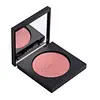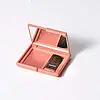What's inside
What's inside
 Key Ingredients
Key Ingredients

 Benefits
Benefits

 Concerns
Concerns

 Ingredients Side-by-side
Ingredients Side-by-side

Mica
Cosmetic ColorantCaprylic/Capric Triglyceride
MaskingSqualane
EmollientZinc Stearate
Cosmetic ColorantLauroyl Lysine
Skin ConditioningC10-18 Triglycerides
EmollientCapryloyl Glycine
CleansingUndecylenoyl Glycine
CleansingButyrospermum Parkii Butter
Skin ConditioningPrunus Amygdalus Dulcis Oil
Skin ConditioningTocopheryl Acetate
AntioxidantDiethylhexyl Syringylidenemalonate
Skin ProtectingSodium Hyaluronate
HumectantIron Oxides
CI 77891
Cosmetic ColorantCI 77742
Cosmetic ColorantCI 15850
Cosmetic ColorantCI 19140
Cosmetic ColorantMica, Caprylic/Capric Triglyceride, Squalane, Zinc Stearate, Lauroyl Lysine, C10-18 Triglycerides, Capryloyl Glycine, Undecylenoyl Glycine, Butyrospermum Parkii Butter, Prunus Amygdalus Dulcis Oil, Tocopheryl Acetate, Diethylhexyl Syringylidenemalonate, Sodium Hyaluronate, Iron Oxides, CI 77891, CI 77742, CI 15850, CI 19140
Talc
AbrasiveMica
Cosmetic ColorantTitanium Dioxide
Cosmetic ColorantOctyldodecyl Stearoyl Stearate
EmollientNylon-12
Neopentyl Glycol Diethylhexanoate
EmollientPentaerythrityl Tetraethylhexanoate
EmollientDiisostearyl Malate
EmollientSilica
AbrasivePearl Extract
AntioxidantMonarda Didyma Leaf Extract
Skin ConditioningMentha Viridis Extract
MaskingMoringa Oleifera Seed Oil
EmollientEpilobium Fleischeri Extract
Skin ConditioningButyrospermum Parkii Butter
Skin ConditioningGlucose
HumectantIsostearic Acid
Cleansing1,2-Hexanediol
Skin ConditioningCaprylic/Capric Triglyceride
MaskingGlyceryl Caprylate
EmollientMethicone
EmollientGlycerin
HumectantAllantoin
Skin ConditioningAmethyst Powder
AbrasiveMentha Arvensis Powder
MaskingPolymethylsilsesquioxane
Water
Skin ConditioningOctyldodecanol
EmollientOleyl Alcohol
EmollientCeramide NP
Skin ConditioningPhytosphingosine
Skin ConditioningCitric Acid
BufferingPotassium Sorbate
PreservativeHydrogenated Lecithin
EmulsifyingDiamond Powder
AbrasiveGlycine Soja Sterols
EmollientTocopherol
AntioxidantCI 15850
Cosmetic ColorantCI 77491
Cosmetic ColorantCI 19140
Cosmetic ColorantIron Oxides
Cetearyl Ethylhexanoate
EmollientCI 77742
Cosmetic ColorantTalc, Mica, Titanium Dioxide, Octyldodecyl Stearoyl Stearate, Nylon-12, Neopentyl Glycol Diethylhexanoate, Pentaerythrityl Tetraethylhexanoate, Diisostearyl Malate, Silica, Pearl Extract, Monarda Didyma Leaf Extract, Mentha Viridis Extract, Moringa Oleifera Seed Oil, Epilobium Fleischeri Extract, Butyrospermum Parkii Butter, Glucose, Isostearic Acid, 1,2-Hexanediol, Caprylic/Capric Triglyceride, Glyceryl Caprylate, Methicone, Glycerin, Allantoin, Amethyst Powder, Mentha Arvensis Powder, Polymethylsilsesquioxane, Water, Octyldodecanol, Oleyl Alcohol, Ceramide NP, Phytosphingosine, Citric Acid, Potassium Sorbate, Hydrogenated Lecithin, Diamond Powder, Glycine Soja Sterols, Tocopherol, CI 15850, CI 77491, CI 19140, Iron Oxides, Cetearyl Ethylhexanoate, CI 77742
Ingredients Explained
These ingredients are found in both products.
Ingredients higher up in an ingredient list are typically present in a larger amount.
This ingredient is also known as shea butter. It is an effective skin hydrator and emollient.
Emollients help soothe and soften your skin. It does this by creating a protective film on your skin. This barrier helps trap moisture and keeps your skin hydrated. Emollients may be effective at treating dry or itchy skin.
Shea butter is rich in antioxidants. Antioxidants help fight free-radicals, or molecules that may harm the body. It is also full of fatty acids including stearic acid and linoleic acid. These acids help replenish the skin and keep skin moisturized.
While Shea Butter has an SPF rating of about 3-4, it is not a sunscreen replacement.
Shea butter may not be fungal acne safe. We recommend speaking with a professional if you have any concerns.
Learn more about Butyrospermum Parkii ButterThis ingredient is an emollient, solvent, and texture enhancer. It is considered a skin-softener by helping the skin prevent moisture loss.
It helps thicken a product's formula and makes it easier to spread by dissolving clumping compounds.
Caprylic Triglyceride is made by combining glycerin with coconut oil, forming a clear liquid.
While there is an assumption Caprylic Triglyceride can clog pores due to it being derived from coconut oil, there is no research supporting this.
Learn more about Caprylic/Capric TriglycerideCi 15850 is the pigment color red. It is an azo dye and created synthetically.
Azo dyes need to be thoroughly purified before use. This allows them to be more stable and longer-lasting.
This ingredient is common in foundations, lipsticks, and blushes. This color is described as brown/orangey red.
It has many secondary names such as Red 6 and Red 7. According to a manufacturer, Red 6 usually contains aluminum.
Learn more about CI 15850CI 19140 is also known as Tartrazine. Tartrazine is a synthetic dye used in cosmetics, foods, and medicine to add a yellow color.
Tartrazine is created from petroleum and is water-soluble.
Some people may experience allergies from this dye, especially asthmatics and those with an aspirin intolerance.
Learn more about CI 19140This ingredient is used to add a violet color to cosmetics.
It is created by reacting phosphoric acid, ammonium dihydrogen orthophosphate, and manganese dioxide.
Mica is a naturally occurring mineral used to add shimmer and color in cosmetics. It can also help improve the texture of a product or give it an opaque, white/silver color.
Serecite is the name for very fine but ragged grains of mica.
This ingredient is often coated with metal oxides like titanium dioxide. Trace amounts of heavy metals may be found in mica, but these metals are not harmful in our personal products.
Mica has been used since prehistoric times throughout the world. Ancient Egyptian, Indian, Greek, Roman, Aztec, and Chinese civilizations have used mica.
Learn more about MicaThis ingredient is a combination of red, black, and yellow iron oxide pigments. This combination of colors is usually found in foundation, because it results in a "skin" color.